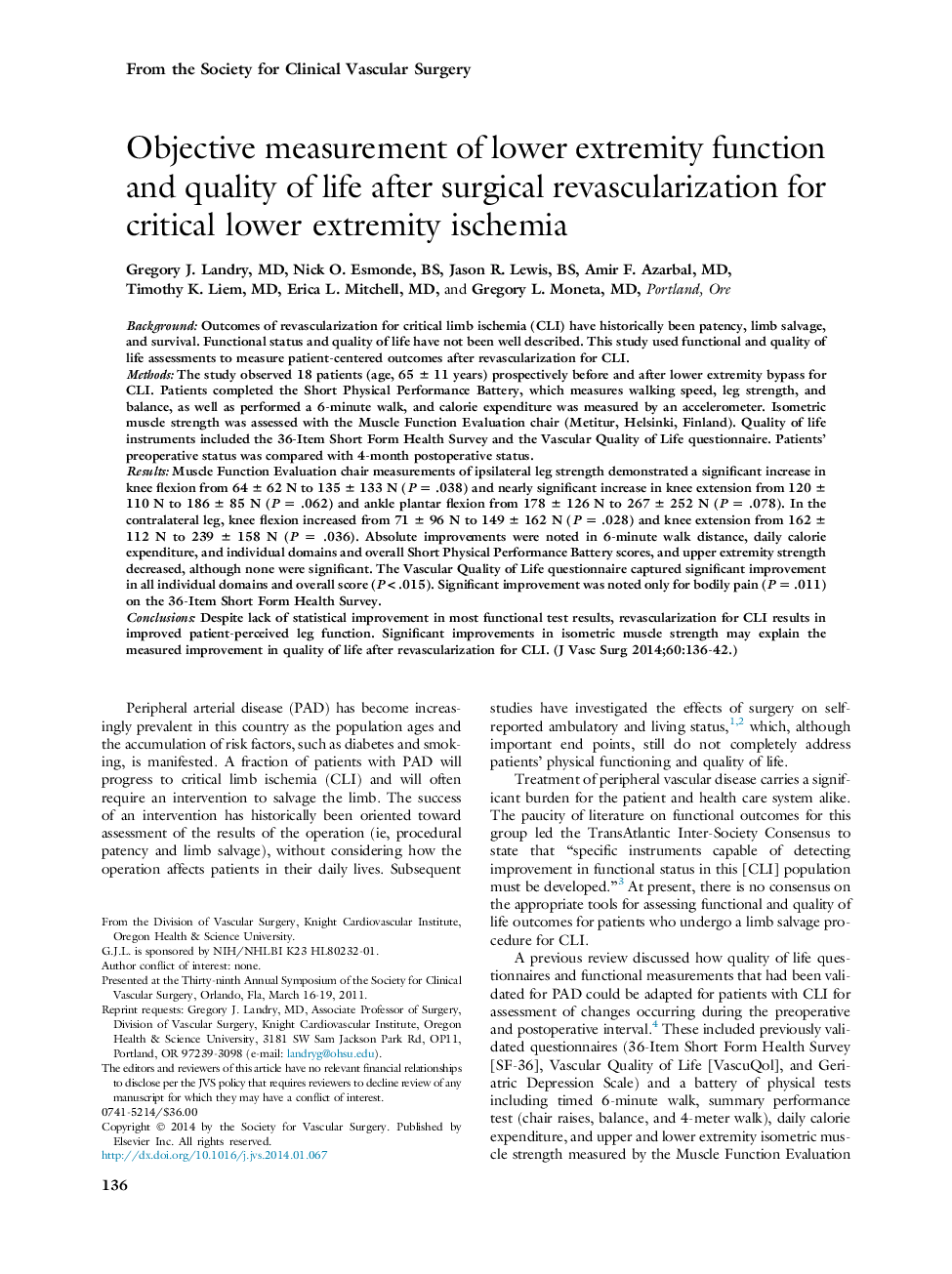| کد مقاله | کد نشریه | سال انتشار | مقاله انگلیسی | نسخه تمام متن |
|---|---|---|---|---|
| 2989421 | 1179840 | 2014 | 7 صفحه PDF | دانلود رایگان |
BackgroundOutcomes of revascularization for critical limb ischemia (CLI) have historically been patency, limb salvage, and survival. Functional status and quality of life have not been well described. This study used functional and quality of life assessments to measure patient-centered outcomes after revascularization for CLI.MethodsThe study observed 18 patients (age, 65 ± 11 years) prospectively before and after lower extremity bypass for CLI. Patients completed the Short Physical Performance Battery, which measures walking speed, leg strength, and balance, as well as performed a 6-minute walk, and calorie expenditure was measured by an accelerometer. Isometric muscle strength was assessed with the Muscle Function Evaluation chair (Metitur, Helsinki, Finland). Quality of life instruments included the 36-Item Short Form Health Survey and the Vascular Quality of Life questionnaire. Patients' preoperative status was compared with 4-month postoperative status.ResultsMuscle Function Evaluation chair measurements of ipsilateral leg strength demonstrated a significant increase in knee flexion from 64 ± 62 N to 135 ± 133 N (P = .038) and nearly significant increase in knee extension from 120 ± 110 N to 186 ± 85 N (P = .062) and ankle plantar flexion from 178 ± 126 N to 267 ± 252 N (P = .078). In the contralateral leg, knee flexion increased from 71 ± 96 N to 149 ± 162 N (P = .028) and knee extension from 162 ± 112 N to 239 ± 158 N (P = .036). Absolute improvements were noted in 6-minute walk distance, daily calorie expenditure, and individual domains and overall Short Physical Performance Battery scores, and upper extremity strength decreased, although none were significant. The Vascular Quality of Life questionnaire captured significant improvement in all individual domains and overall score (P < .015). Significant improvement was noted only for bodily pain (P = .011) on the 36-Item Short Form Health Survey.ConclusionsDespite lack of statistical improvement in most functional test results, revascularization for CLI results in improved patient-perceived leg function. Significant improvements in isometric muscle strength may explain the measured improvement in quality of life after revascularization for CLI.
Journal: Journal of Vascular Surgery - Volume 60, Issue 1, July 2014, Pages 136–142
